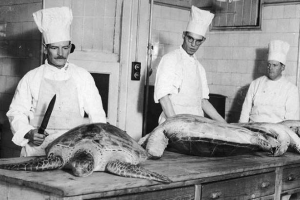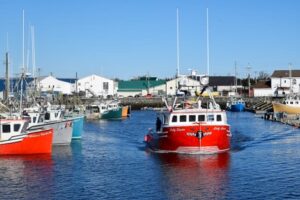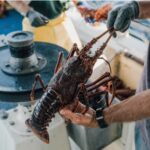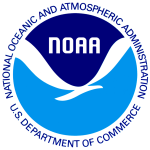Tag Archives: Pacific Decadal Oscillation.
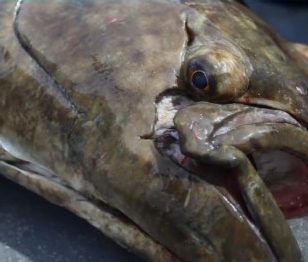
Survey again shows drop in halibut stocks in Gulf of Alaska
The 2018 stock status report presented to the International Pacific Halibut Commission at its interim meeting on Nov. 27 shows yet another drop in the biomass of Pacific halibut in the North Pacific — about 7 percent down from the 2017 fishery-independent setline survey. That doesn’t mean every single region dropped, as it’s an average, but Alaska’s three main areas of effort — 2C, the entirety of Region 3, and Region 4 excluding the western Aleutian Islands — all dropped. The most significant drop was in Area 2, which stretches from northern California to Southeast, falling 15 percent. Region 3, which stretches across the Gulf of Alaska out to the Alaska Peninsula, fell 7 percent. >click to read<20:19
Researchers: Columbia spring chinook forecast might be too high
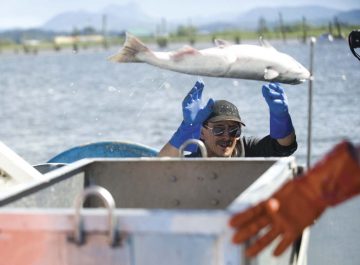 Fisheries managers have been predicting a slightly below-average run of spring chinook salmon on the Columbia River this year, but a newly published suggests that it may be worse. According to researchers from Oregon State University and the National Oceanic and Atmospheric Administration, ocean conditions were historically bad in the spring of 2015, when migrating yearling fish that will comprise the bulk of this spring’s adult chinook salmon run first went out to sea. In fact, Pacific Decadal Oscillation values — which reflect warm and cold sea surface temperatures — suggest it was one of the warmest nearshore oceans encountered by migrating chinook salmon dating back to at least 1900. The lack of food for the salmon in 2015 may have resulted in significant mortality that will show in this year’s run of Columbia River springers. One way or another, it will provide new information on fish survival and whether juvenile salmon prey data can help resource managers predict future returns. continue reading the story here 10:11
Fisheries managers have been predicting a slightly below-average run of spring chinook salmon on the Columbia River this year, but a newly published suggests that it may be worse. According to researchers from Oregon State University and the National Oceanic and Atmospheric Administration, ocean conditions were historically bad in the spring of 2015, when migrating yearling fish that will comprise the bulk of this spring’s adult chinook salmon run first went out to sea. In fact, Pacific Decadal Oscillation values — which reflect warm and cold sea surface temperatures — suggest it was one of the warmest nearshore oceans encountered by migrating chinook salmon dating back to at least 1900. The lack of food for the salmon in 2015 may have resulted in significant mortality that will show in this year’s run of Columbia River springers. One way or another, it will provide new information on fish survival and whether juvenile salmon prey data can help resource managers predict future returns. continue reading the story here 10:11
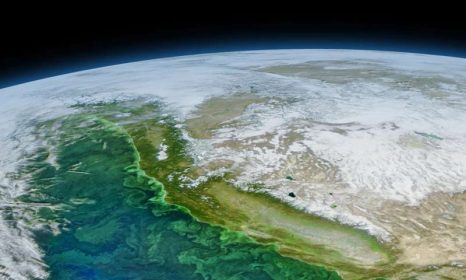
El Nino, Pacific Decadal Oscillation implicated in domoic acid shellfish toxicity
Using a combination of time-series data spanning two decades, the scientists not only showed a clear link between domoic acid and these larger climatic phenomena, but also developed a new model to predict with some accuracy the timing of domoic acid risks in the Pacific Northwest. The model is based on interpreting the status of the “Oceanic Niño Index” and the Pacific Decadal Oscillation – both of which are measures of climate, ocean water movement, currents and temperature. It’s designed to help coastal resource managers more effectively monitor this issue and protect public health. The findings were made by researchers from Oregon State University, the University of Oregon, the National Oceanic and Atmospheric Association (NOAA), and the Oregon Department of Fish and Wildlife. The work was primarily supported by NOAA. Read the article here 08:01
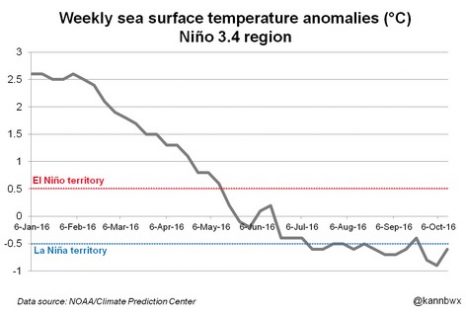
Global Cooling? Stronger-Than-Expected La Niña May Be Brewing
Many have doubted forecasts calling for the onset of the first La Niña in almost five years, believing that its failure to materialize in convincing fashion last summer – as originally predicted – means that it may be off the table for 2016-17. But in recent weeks, the oceans and atmosphere have been pulling everything into place to facilitate a potentially stronger La Niña than previously thought, so those who follow commodities markets may want to take a second look. Cooling sea surface temperatures in the key Niño 3.4 region have touched the levels of early 2012. –Karen Braun, Reuters, 20 October 2016 Read the rest here 14:39
Pacific Ocean warms up along Oregon Coast, drawing unusual visitors
 “As far as climate scientists know, it could be a weird aberration or it could very well be something that could stick around for a while,” he said. Or as Northwest Fisheries Science Center Director John Stien put it, “We’re seeing some major environmental shifts taking place that could affect the ecosystem for years to come.” Nate Mantua, another NOAA scientist, said the conditions are so unusual that he believes they won’t be long-lasting. Read the rest here 07:37
“As far as climate scientists know, it could be a weird aberration or it could very well be something that could stick around for a while,” he said. Or as Northwest Fisheries Science Center Director John Stien put it, “We’re seeing some major environmental shifts taking place that could affect the ecosystem for years to come.” Nate Mantua, another NOAA scientist, said the conditions are so unusual that he believes they won’t be long-lasting. Read the rest here 07:37
Summer winds are intensifying along the Marin Coast and climate change is a likely cause, a new study says.
 At this point “we don’t know what the implications are,” said William Sydeman, president of the Farallon Institute for Advanced Ecosystem Research in Petaluma, who led the study by seven scientists in the U.S. and Australia. “On the one hand it could be good. On the other hand, it could be really bad.” Sounds about right! They don’t know,,,Read more here 06:55
At this point “we don’t know what the implications are,” said William Sydeman, president of the Farallon Institute for Advanced Ecosystem Research in Petaluma, who led the study by seven scientists in the U.S. and Australia. “On the one hand it could be good. On the other hand, it could be really bad.” Sounds about right! They don’t know,,,Read more here 06:55
Salmon Runs Boom, Go Bust Over Centuries – ScienceDaily
 Scientists in the past 20 years have recognized that salmon stocks vary not only year to year, but also on decades-long time cycles. One example is the 30-year to 80-year booms and busts in salmon runs in Alaska and on the West Coast driven by the climate pattern known as the Pacific Decadal Oscillation. Read more
Scientists in the past 20 years have recognized that salmon stocks vary not only year to year, but also on decades-long time cycles. One example is the 30-year to 80-year booms and busts in salmon runs in Alaska and on the West Coast driven by the climate pattern known as the Pacific Decadal Oscillation. Read more

































